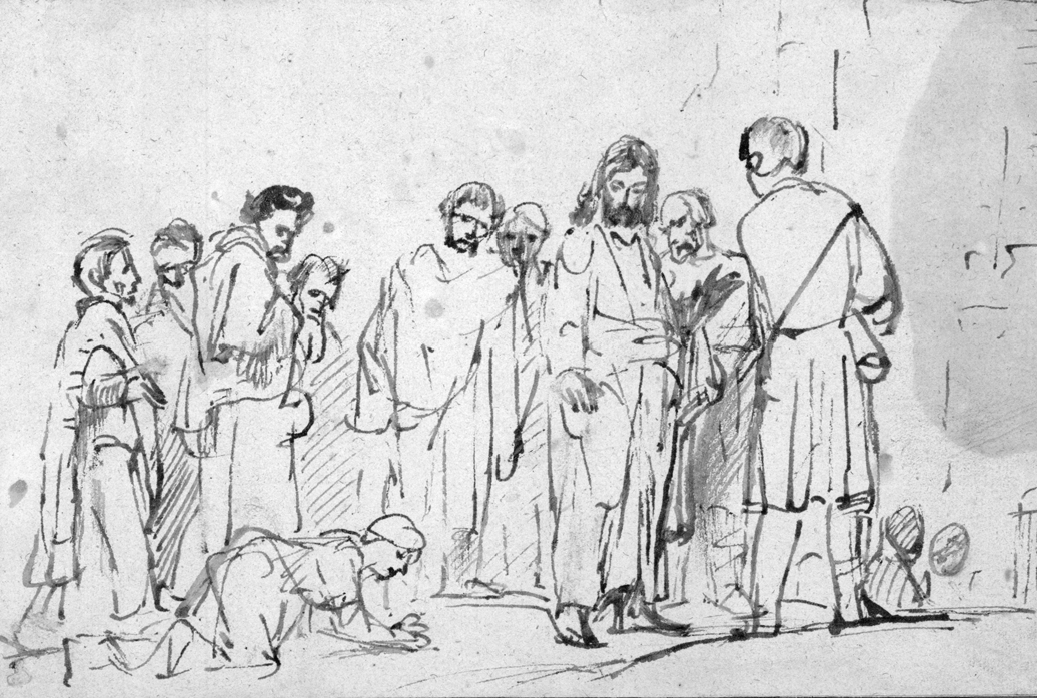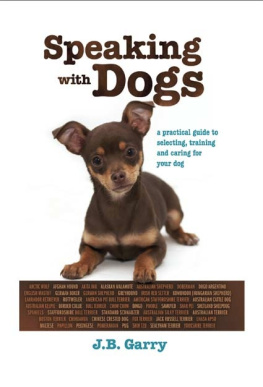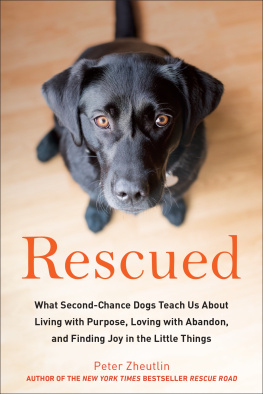The Gospel According to Dogs
What Our Four-Legged Saints Can Teach Us
ROBERT L. SHORT

For Sparky SchulzHow we miss him!
If it is for this life only
that Christ has given us hope,
we of all people are most to be pitied.
1 CORINTHIANS 15:19 ( REB )
J ESUS, in attempting to get peoples attention and also in attempting to make himself clear once their attention was got, would often use similes. He would say, The kingdom of heaven is like and then hed go on to say just thatwhat the kingdom of heaven was like. Using images in parable, comparison, and simile, Jesus would show us (Luke 6:47) a picture that in some way resembled his Fathers kingdom: The kingdom of heaven is like a mustard seed (Matthew 13:31); the kingdom of heaven is like yeast that a woman took and mixed in with three measures of flour until all of it was leavened (Matthew 13:33); the kingdom of heaven is like treasure hidden in a field (Matthew 13:44); the kingdom of heaven is like a merchant in search of fine pearls (Matthew 13:45).
In using cartoons in my books, Im trying to do the same two thingsto get peoples attention and then also to make clear my own take on the meaning of Jesus. Im not trying to interpret the cartoon or tell you what was in the mind of the cartoonist. For anyone to claim they know what is in the mind of another person is not only presumptuous but impossible. Shakespeare was always warning us about this kind of thing. For instance, theres a semi-comic scene in Richard III in which the Bishop of Ely asks Buckingham if he knows what Richard is thinking. Buckingham replies:
Who, I, my lord! We know each others faces,
But for our hearts, he knows no more of mine
Than I of yours
Nor I no more of his than you of mine. (III, iv, 1013)
So I just want to be clear that in this book Im not at all intending to say what any cartoonist intended. Im only attempting to say what I think the person of Jesus intends. The cartoons Im using should only be seen as beautiful little pearl-like illustrations. The kingdom of heaven is like when Red says to Rover; it is like Snoopy when he; it is like Daisys love of; etc. These are similes, mere similes, and in no way am I attempting to read the mind of any cartoonist. Sometimes its hard enough for me to know what Im thinking myself without trying to guess whats going on in anyone elses head.
And Ill be doggoned if this isnt so!
Ive had a lot of kind and generous help in putting this little book together. In particular Id like to thank Monte Schulz, Charles M. Sparky Schulzs older son, who, since his dad passed away, graciously initiated a friendship that fills a lot of the large empty place left in my life by Sparkys absence. I hope Ive done something of the same for Monte. Indeed, the Charles Schulz family as a whole are very gracious to allow me to use the Peanuts strips in this dog tract,1 and for that I sincerely thank them. Also, special thanks to Kim Towner of Charles M. Schulz Creative Associates. At Harper San Francisco, Kris Ashley and my most excellent editor Cindy DiTiberio have turned out to be the best of friends. As for my Little Rock friend Ron Wolfe (truly the best-natured wolf anyone could ever hope to know), Im sure his Christian Dogma by Karl Bark cartoon will bring as much delight to many others as it has to me. During the whelping time of this unruly little puppy, eye hath not heard, ear hath not seen, nor tongue conceived (as the Pauline Bottom would put it)2 how much the lovely Alice Buckley has helped, especially in her cheerful mastery of a complete mystery to me, the Internet. (In Samuel Becketts 1954 play Waiting for Godot, Pozzo says of the Christ-figure Lucky, He thinks hes entangled in a net. Im sure Id think the same thing if this old dog were to try this new trick.) And as for the many friendly audiences who have seen the core of this book presented in the form of a color slide program, their nourishing comments and encouragement have made these get-togethers for me personally what suppertimes are for Snoopyjoyous occasions.
R.L.S.
she keeps shouting after us (v. 23). So Jesus turns to her and says, I was sent only to the lost sheep of the house of Israel (v. 24). Does this stop her? Not even almost. But she came and knelt before him, Matthew tells us (v. 25). Get the picture? If not, Rembrandt, with one of his drawings of this scene, can help us see what happened. Evidently, for Rembrandt, as for Martin Luther, the Canaanite woman was a source of unending wonder and comfort.3
This dog of a womanfor so the Canaanites were thought of by the Jews, especially the Canaanite womenthis Canaanite dog was quite willing to play this part, to become a dog, literally down on all fours. Literally begging. Not only a Canaanite and a woman, but now also a dog! How low can a person sink? Lord, help me, she cries. Then Jesus gives her the ultimate test: It is not fair to take the childrens food and throw it to the dogs, he tells her. Yes, Lord, she answers, yet even the dogs eat the crumbs that fall from their masters table (vv. 2627). That does it! That is the answer Jesus wants to hear. In the single place in scripture where Jesus seems to have changed his mind, he says, Woman, great is your faith! Let it be done for you as you wish. And her daughter was healed instantly (v. 28).

Drawing by Rembrandt. Courtesy of Albertina Vienna.
This was nothing new in the ministry of Jesus. From the very beginning hed been consistent and insistent that his message was directed to the spiritually poor, to the lowest of the low in heart, to emotional down-and-outers, to those knocked down on all fours, to those who were willing to crawlto the dogs, in other words. And here she came, taking Jesus at his word, groveling and grateful for any little scrap that might fall from his table. She became a dog. And this was exactly the kind of humility Jesus was looking for. Now she was no longer a Canaanite, and certainly she was not a Jew. She was a new creature: she was now a disciple of Jesusshe was now a dog.
And so it is that the dog has become a traditional representation for faith in Christian symbolism. For instance, were told that the dog, because of his watchfulness and fidelity, has been accepted as the symbol of these virtues.4 And that black-and-white dogs were sometimes used as symbols of the Dominicans ( Domini canes , dogs of the Lord) who wore black-and-white habits.5
In Christian teachingChristian dogmaChrist is seen as the doorway to God, and the doorway to belief in Christ is understood as humility, the cross, the renunciation or letting go of whatever goals or ultimate concerns we have previously served and lived for. In this letting go, our hands and arms are stretched wide open, just as Christs were as he hung on the cross. But whether we are emotionally stretched out to the breaking point or we metaphorically fall on all fours, as the Canaanite woman did, this infinitely low point of suffering is the necessary first step in becoming a real Christian. This is the first reason all real Christians are dogs. At the beginning of our journey, each one of us was knocked down to this doglike level of lowliness. Its precisely from this lowest of low points that Christ originally raised us up. It was at rock bottom that we finally found the rock-firm foundation that we needed. Its only out of these depths that real faith can be bornto humbly follow and cry after Jesus as Lord!













